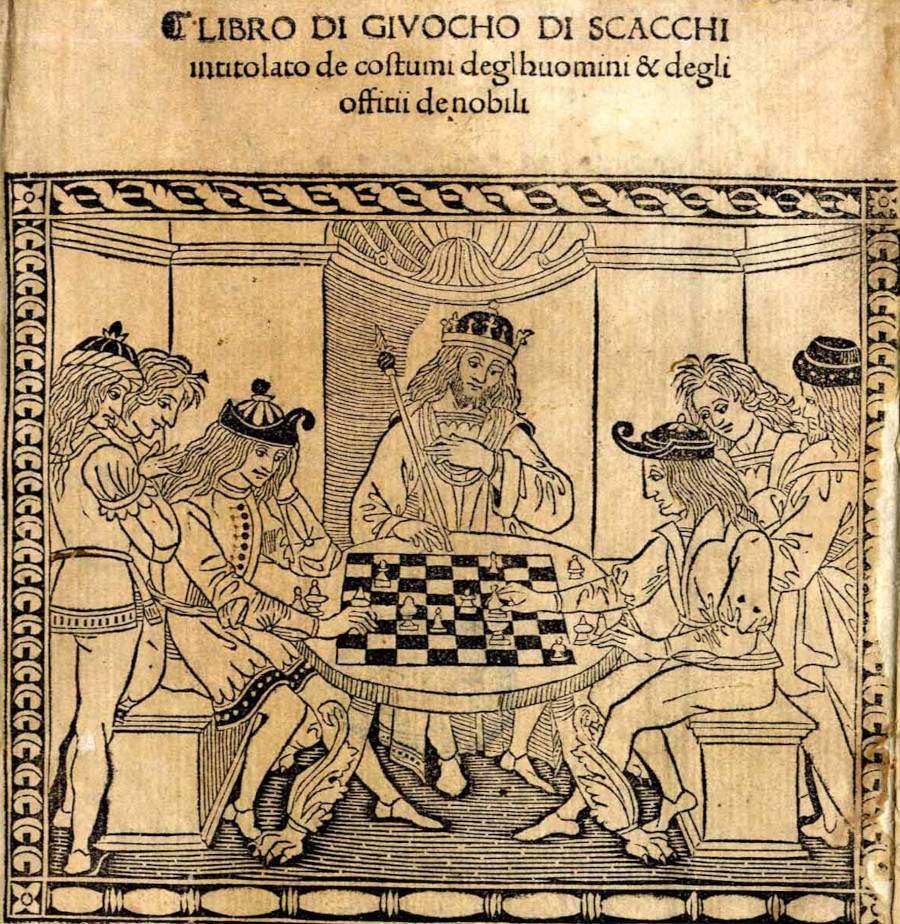An exhibition on the history of chess with treasures from the Bertoliana in Marostica
In the halls of Marostica ’s Lower Castle, the exhibition The Battle of the Two Kings with Mock Array will be open from August 6 to September 18, 2022. The history of chess between the 13th and 18th centuries in the books of the Bertoliana Library, curated by Laura Sbicego.
While the six hundred and fifty figures who will bring to life, Sept. 9-11, the Living Chess Game are rehearsing costumes, movements, choreography and strategies, Pro Marostica, organizer of the popular challenge, invites the public to delve into the history of chess, drawing on the treasures of the Bertoliana Library in Vicenza, which has been active since the 18th century.
Among its many treasures, the Bertoliana holds a rare collection of universal chess literature: manuscript and printed works dated between the 13th and 19th centuries, often enhanced by drawings and engravings. Of particular note is a very small manuscript, compiled in the nineteenth century by librarians Ignazio Savi and Andrea Capparozzo, which contains the bibliographic census of books on the game of chess at the time owned by the Vicenza Library. That inventory was later expanded to the level of specialized bibliography.
On display will be the Liber ... super ludo scachorum (1493) by Jacopo da Cessole, with extraordinary illustrations, and Pedro Damiano da Odemira’s Manual for “learning to play chess et de le partite” (1512), Il gioco de gli scachi (1584) by Ruy Lopez de Segura, or the treatise Scacchia ludus (1527) by Girolamo Vida or, again, Il gioco de gli scachi (1617) by Pietro Carrera, or theAnalyse du jeu des echecs (1749) by François-André Danican Philidor. Fascinating, in Lettres ... accompagnee de trois gravures ... qui representant ce fameux Automate (1783), are the images of the celebrated Automa playing chess. Rare works, often embellished with significant illustrative plates of the different phases of the ludus.
Alongside the chess treatises that marked the history of the game in Europe, the miniature decorating the Bible by the copyist Cambius Vicentinus is noteworthy. The small illuminated scene depicts a cleric and a layman seated and playing chess: it is one of the earliest representations of chess games known to date, made in France in the third quarter of the 13th century, during the years when King Louis IX banned the game of chess.
"The celebration of chess in its various forms is always an opportunity to remember our most famous event, which originated from a theatrical libretto by the volcanic Mirco Vucetich and was scheduled in even-numbered years on the beloved chessboard placed on the pavement of the square," said Simone Bucco, president of the Pro Marostica Association. “The exhibition also has the merit of enhancing the extraordinary chess heritage preserved by the Pro Marostica Association, which has always been committed to the organization and promotion of the famous historical re-enactment, which stages with large and live pieces a unique and exciting challenge.”
The exhibition is organized in collaboration with the Municipality of Marostica, Pro Marostica Association, “Città di Marostica” Chess Club, A.S.D. Scacchi Berici, Fondazione Benetton Studi Ricerche, and chess historian Diego D’Elia.
Pictured is the title page of Liber ... super ludo scachorum by Jacopo da Cessole
 |
| An exhibition on the history of chess with treasures from the Bertoliana in Marostica |
Warning: the translation into English of the original Italian article was created using automatic tools. We undertake to review all articles, but we do not guarantee the total absence of inaccuracies in the translation due to the program. You can find the original by clicking on the ITA button. If you find any mistake,please contact us.





























